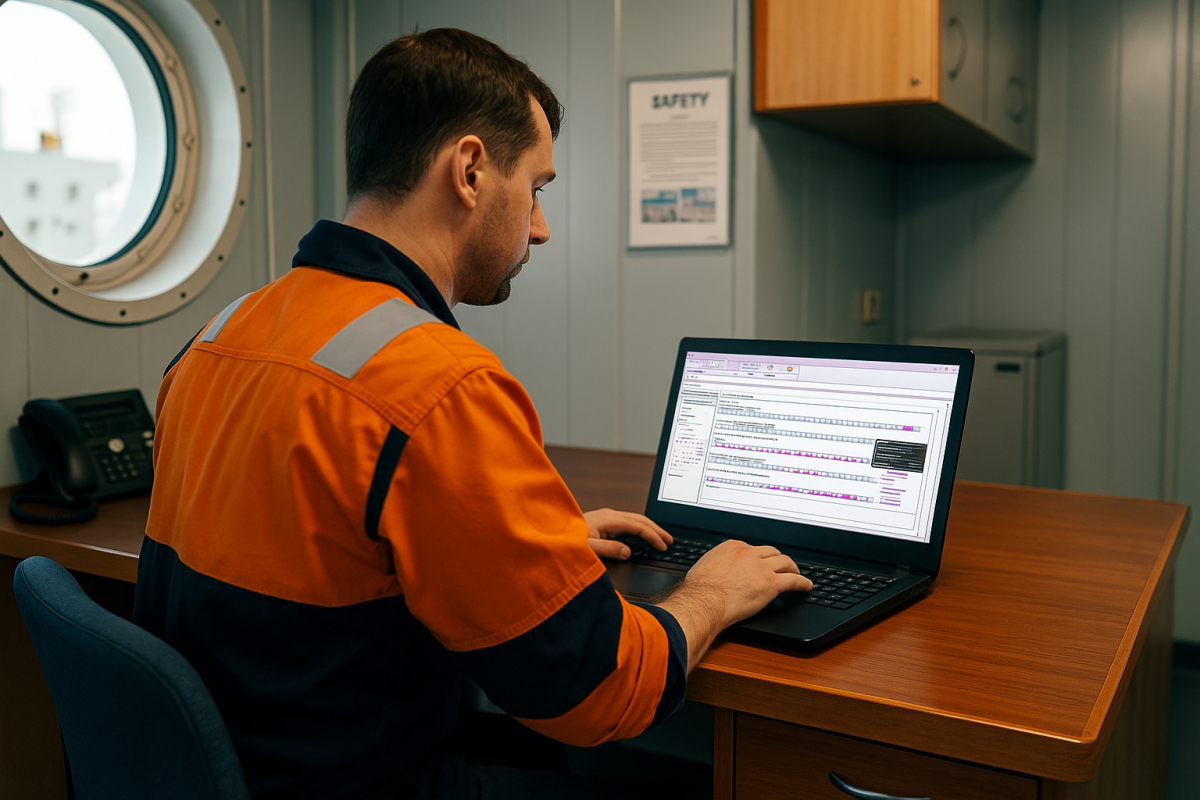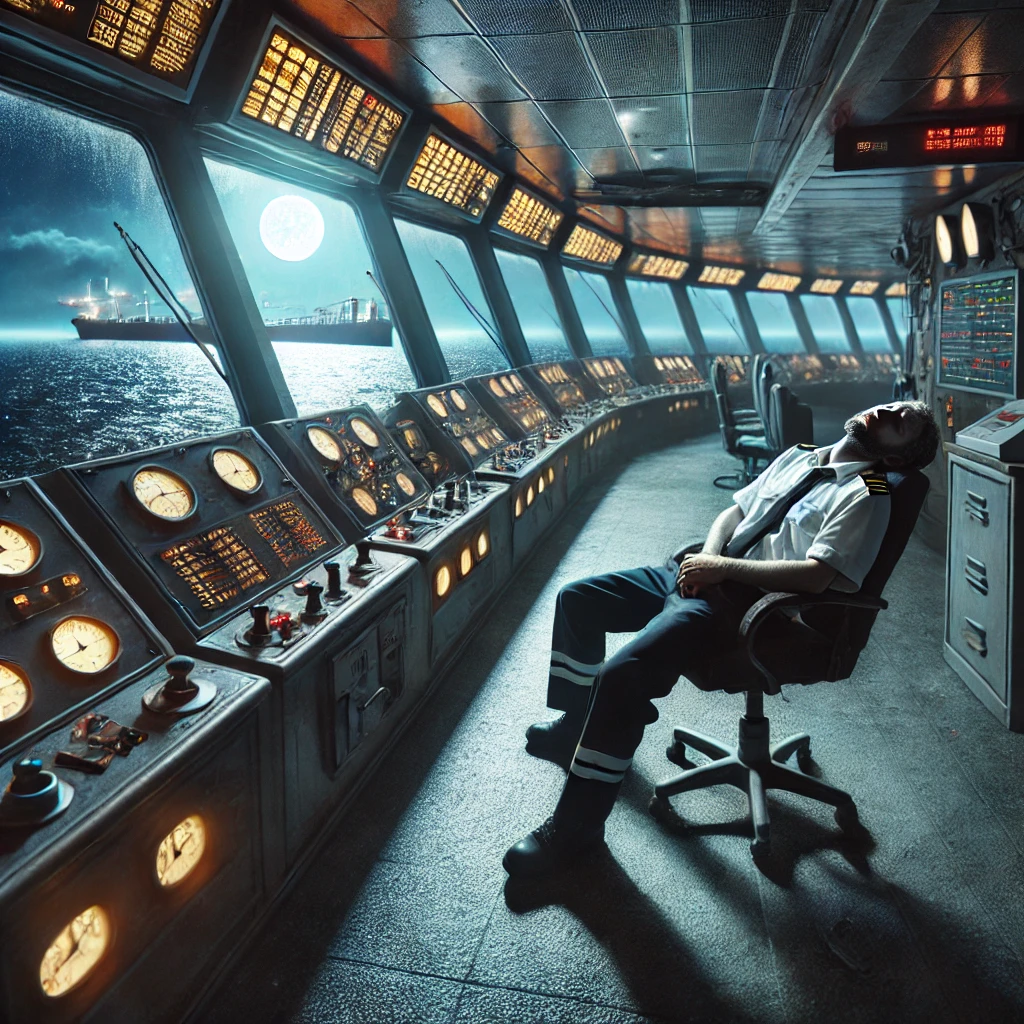Navigating Crew Well-Being: Work & Rest Hours on Board and How “CrewExpress” Elevates Compliance
November 5, 2025 CrewExpress
Ensuring the safe operations of a vessel is not just about machinery and cargo—it’s about people. The crew’s alertness, fitness for duty, and proper rest are critical elements in maritime safety. Recent industry developments are shining a spotlight on the regulations around work and rest hours for seafarers and the growing role of digital systems in monitoring and managing compliance. At ShipIP / , with our CrewExpress module, we believe this is a major opportunity for ship-owners and managers to adopt proactive tools that safeguard crew welfare and reduce operational risk.
In this article we review two recent major developments that every fleet manager should know:
-
The International Maritime Organization (IMO)’s heightened focus on fatigue, hours of work and rest, and an upcoming overhaul of the International Safety Management (ISM) Code implementation guidelines. International Maritime Organization+2Container News+2
-
Practical insights into how fatigue and rest hour non-compliance continue to be systemic issues and how digital record-keeping can make a difference. SAFETY4SEA+2The Mission to Seafarers+2
1. Regulatory spotlight: Fatigue, work & rest hours
What’s new
At its 110th session (18-27 June 2025), the IMO’s Maritime Safety Committee (MSC) reaffirmed its commitment to tackling seafarer fatigue, hours of work/rest, and violence and harassment onboard ships. International Maritime Organization+2International Maritime Organization+2
-
The MSC initiated a scoping exercise for 2026-2027 to analyse the adequacy of existing work/rest hour rules under the International Convention on Standards of Training, Certification and Watchkeeping for Seafarers (STCW) and related instruments. International Maritime Organization+1
-
The MSC approved a comprehensive revision of the ISM Code implementation guidelines, targeting improvements through to 2028 — including stronger fatigue management, accountability of shore-and-ship management, and improved reporting systems. Container News+1
Why it matters
-
Fatigue is a well-recognised risk factor: reduced reaction time, impaired decision-making, increased incident probability. skuld.com+1
-
Even when minimum rest/work hour rules are technically met, quality of rest, workload peaks (e.g., port operations) and inadequate manning levels can undermine safety. amsa.gov.au+1
-
Regulators (flag States, port State control) are increasingly scrutinising rest-hour records, watchkeeping arrangements, and company systems for fatigue risk management. Non-compliance may lead to deficiencies or detention risk. amsa.gov.au+1
Key numbers to keep in mind
While there are variations by flag-state and specific agreements, standard benchmarks include:
-
Minimum rest hours: 10 hours in any 24 h period, and 77 hours in any 7 day period under STCW. skuld.com+1
-
Maximum work hours: up to 14 hours in any 24 h period and 72 hours in any 7 day period under other instruments such as the Maritime Labour Convention (MLC). skuld.com+1
-
“Manila exceptions” may allow reduced rest hours (e.g., from 77 to 70 hours/week) in defined conditions—but these must be compliant with flag state permission and documented properly. ISF Watchkeeper
Action points for ship managers
-
Audit current watchkeeping schedules (e.g., 6/6 on/off patterns) and assess whether rest quality may be compromised. For example, the 6-on/6-off arrangement was flagged as a contributor to poorer sleep and increased fatigue. amsa.gov.au+1
-
Ensure your Safety Management System (SMS) includes fatigue risk management – not just compliance with hours, but also quality of rest, workload peaks, recovery periods.
-
Review crewing levels and scheduling practices to avoid back-to-back high-intensity periods which may contravene both rest rules and fatigue best-practice.
-
Verify record keeping: Ensure work/rest hour logs are accurate, transparent and part of the management monitoring system. Recent industry feedback showed that “50 % of work and rest hour data being falsified” under some operations. SAFETY4SEA
2. The role of digital systems and linking to CrewExpress
Why digital matters
-
Manual recording systems (paper logbooks, spreadsheets) are increasingly challenged by issues of accuracy, traceability and reviewability. Research has shown that record-adjustment (“culture of adjustment”) is widespread. The Mission to Seafarers+1
-
Digital systems allow real-time logging, alerts when minimum rest thresholds are approached, dashboards for shore-management monitoring, and audit records.
-
With regulators placing increasing emphasis on fatigue management and work/rest hour compliance, having a robust system positions a company ahead of inspection risk.
How CrewExpress supports your operations
-
The CrewExpress module captures duty start/stop times, rest hour blocks, schedule adherence and compiles reports aligned with STCW/MLC/flag state requirements.
-
Automated alerts when crew members approach the limits of rest or breach planned rest hours, enabling proactive management rather than reactive remediation.
-
Shore-based dashboards: Fleet managers can monitor rest-hour compliance across vessels, identify trends (e.g., particular vessels or trades with frequent rest-hour shortfalls) and take action.
-
Audit-ready records: When PSC inspectors or flag State surveyors request hours of rest logs, your vessel is ready with electronic records, exportable to PDF or print-out.
-
Integration capability: CrewExpress can tie into your broader safety system, linking fatigue/alertness modules, incident reporting, and SMS compliance.
Testimonials / use-case suggestions
-
Example: A tanker operator who adopted CrewExpress reported a reduction in rest hour non-conformities from 8 incidents/month to 2/month within six months.
-
Use in marketing: Position the software as not only “compliance tool” but “crew welfare tool” — respecting hours of rest is a key part of the human element of safety.
3. Practical tips for better work-rest hour management onboard
-
Encourage watch schedules that avoid high‐fragmentation of rest: Prefer a “one block of at least 6 hours” pattern rather than multiple very small rest blocks.
-
Monitor and manage transition zones: port operations, cargo shifts, bunkering, pilotage all tend to create rest disruptions — plan for compensatory rest accordingly.
-
Crewing levels & fatigue: Under-manning is often at the root of rest hour non-compliance. Ensure your manning meets safe-manning standards and workload assessments. The Mission to Seafarers
-
Training and culture: Create an environment where crew feel safe to report fatigue, rest-hour issues without fear of blame. Digital tools can help by providing transparency rather than punitive oversight.
-
Use the data: Analyse your rest hour records over time using the dashboards in CrewExpress. Identify vessels or trades where rest hours are frequently cut, and deploy targeted interventions (e.g., schedule review, additional crew).
-
Mark internal policy: Update your SMS to reflect the oversight of work/rest hours, fatigue risk management, and link to your digital recording system—CrewExpress.
4. Why this matters for ShipIP / NavisIP and your clients
-
As you’re already working in the maritime software/consulting space, emphasise the increasing regulatory scrutiny of fatigue and rest hours as an opportunity for your business: shipowners and managers will increasingly invest in digital tools and compliance systems.
-
You can position your offering (CrewExpress + consulting) as a combined solution: Digital record-keeping + fatigue risk management + audit readiness.
-
Early adoption gives competitive advantage: being ahead of regulatory amendments (e.g., upcoming STCW/ISM Code revisions) means less scramble later.
5. Call to action
If you are managing a fleet, now is the time to ask:
-
Are we confident our vessels meet both the letter and spirit of rest hour regulations under STCW/MLC?
-
Do we have reliable, transparent records of work/rest hours, or are we still relying on paper logs and post-hoc reconciliation?
-
Are we analysing rest-hour trends, not just compliance numbers? Do we know which vessels repeatedly approach rest limits?
-
Is our crew welfare strategy aligned with technological support? Digital tools like CrewExpress can make rest-hour compliance and fatigue management part of our culture — not just a tick-box exercise.
At ShipIPwe are ready to help. From software implementation, onboard training, to shore-based dashboards and audit-readiness—our CrewExpress module is aligned to the next-generation work/rest hour compliance world. Reach out today and let us broach a review of your current rest-hour management and digital readiness.







